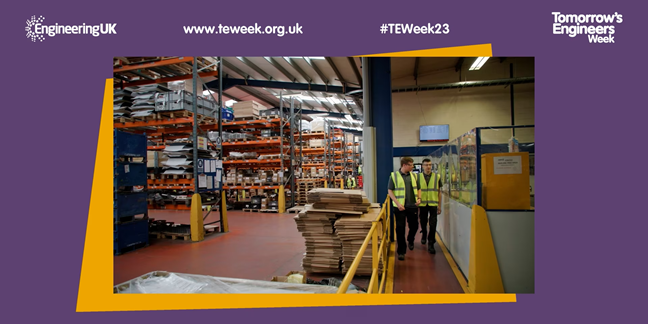Feb 8, 2024

For T Level Thursday during National Apprenticeship Week, we’ve spoken to our Head of Careers, Eleanor Eyre, to find out more about what T Levels are and what's in it for young people and employers.
What are T Levels?
T Levels were first launched in September 2020. They are career-focused, technical, Level 3 qualifications which employers have helped design, making them relevant to industry today and in the future. In particular, T Levels in engineering and manufacturing have been designed to address the skills needs that empoyers in these sectors have highlighted, and could be key to brining in ifuture talent with the relevant skills and experience for these roles. The great thing about T Levels is that they involve a 45-day work placement, giving students the chance to apply the technical knowledge they’ve gained in the classroom to a real-life work project. T Levels take 2 years to complete and one T Level is roughly equivalent to 3 A levels.
What's the difference between T Levels and apprenticeships?
Good question! Both combine practical experience of the world of work with learning in a classroom environment. They are different in that apprentices are employees and spend the majority of the week at work, learning on the job from colleagues who are qualified in the area they’re training in. Apprentices are ‘released’ for a day or so each week, to support their practical, on-the-job experience with recognised qualifications, which typically they work towards in a classroom setting, at college or through a training provider. Apprenticeships exist at Level 2 through to Level 6 or 7 (Degree Apprenticeships) and can least between 1 year and 6 years, depending on the level. Anyone over the age of 16 can apply for an apprenticeship.
T Levels are Level 3 qualifications for 16 to 19-year-olds. T Level students are full-time students, in the same way that A level students are. 80% of learning takes place in the classroom. T Level students undertake a 45-day industry placement with an employer as part of the 2-year qualification, where they get to put into practice the technical skills and knowledge they have gained in the classroom. The employer and the educational institution work together to support the student during this placement.
Why should young people consider T Levels?
T Levels are one of several post-16 qualifications available, and my advice would be to spend time exploring each different option (including A Levels, Highers, Apprenticeships, International Baccalaureate and TechBacc) with parents, carers, teachers, careers advisers and friends, to work out which one might be best suited. T Levels are an attractive option because they offer the security of being a full-time student with the opportunity to build a professional network. T Level students get to experience the best of both worlds, by applying the technical skills and knowledge they learn in the classroom to real projects at work.
Students take just 1 T Level (compared to 3 or more A levels, for example), so they are a good, focused option for young people who have an idea about the type of sector they want to work in, whether that’s manufacturing, digital production, science, construction, agriculture, or one of the other twenty-plus T Level subject areas.
What qualifications do you need?
Generally, students need a minimum of 5 GCSES at grades 9-4, including English and maths. Sometimes a grade 5 will be required in maths, depending on the subject area. It is possible to work towards achieving a grade 4 at English or maths as part of the T Level, once enrolled. Each school and college offering T Levels will have slightly different entry requirements, so it’s best to check with them directly. Some places offer a T Level Foundation Year, which is a 1-year post-GCSE study programme designed to prepare students for their chosen T Level, supporting their English, maths, study skills and technical skills.
What skills do you develop?
This will really depend on the T Level subject. But in general, technical skills related to the sector the T Level is part of, plus employability skills and study skills – all of which are important life skills and can be applied to further study, an apprenticeship, the world of work, and beyond. Skills that students develop doing an Engineering & Manufacturing T Level are helpful across industry – from producing and interpreting drawings, building models and simulations using CAD software to quality control, fault finding and risk assessment.
What can you do afterwards?
T Levels can lead onto a degree apprenticeship, a university degree, or a job – potentially with the employer at which the work placement was undertaken, or with another employer in that network or sector. The industry experience and insight gained through the T Level is sought after by employers and gives T Level students the edge.
What’s in it for employers?
Not only do T Levels ensure a new pipeline of skilled and motivated talent into the sector, but your business will benefit directly from offering industry placements. Throughout the placement you can test - and shape – the students’ skills to see if they are a good fit for your business. You could even find a future long-term employee!
Employers are a crucial part of ensuring T Levels are a success, as there are some skills that can only be developed in an industry/work-based environment. Providing meaningful industry placements is key to this, so your business could help to shape the future of the sector. By hosting a placement, employers can define and hone the skills a student develops,highlighting opportunities in the sector to a large cohort of students who are at a key point in their career decision-making.
< Back to Blog

